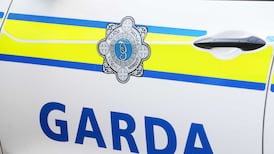The funeral for the two siblings who drowned off Ballybunion beach in Co Kerry last week will take place on Tuesday.
Muriel Eriksson, a 62-year-old Irishwoman who was home on holidays from Sweden where she was living, was discovered in the water on Thursday evening having drowned along with her brother, Dessie Byrne (50).
Mr Byrne, who was originally from Athlone, was living in Lecarrow, Co Roscommon, while Ms Eriksson had an address in Malmo, Sweden.
Mr Byrne’s teenage son, the only other family member on the beach at the time with his father and aunt, had raised the alarm and was said to be deeply traumatised by the event.
What is the National Gallery’s scanner that cost €125,000 and what would it be used for?
‘We grew up Irish Catholic’: How Nicola Coughlan got raunchy Bridgerton scenes cut
The Last Showgirl review: Pamela Anderson has found the right role at the right time
‘I’m 50 this year and feel a bit like a teenager with my problem. My best friend has fallen in love’
In a notice on RIP.ie, it states that Ms Eriksson will repose alongside Mr Byrne at his home on Monday evening.
Their funeral Mass will take place at noon on Tuesday at St John’s Church, Lecarrow. Mr Byrne’s will be buried in the local cemetery. Ms Eriksson’s remains will be cremated the following afternoon at Lakelands Crematorium, Cavan.
[ Second Ballybunion victim named as gardaí seek to establish how tragedy unfoldedOpens in new window ]
Taoiseach Micheál Martin has said he was “deeply shocked and saddened at this very tragic and heartbreaking loss of lives on what was a beautiful day”.
He said he wanted to extend his sincere sympathies to the family and friends of the bereaved and “particularly to those family members who were present who witnessed this tragedy”.
Meanwhile, Water Safety Ireland has issued a renewed appeal to members of the public not to go into the water if they see someone struggling, and to instead “shout, reach and throw”.
Acting chief executive of the body Roger Sweeney said often a shout is all it takes to orientate a struggling swimmer towards the shore.
“Then reach for something, I remember talking to a nine-year-old girl who saved her 10-year-old brother from drowning using a hurley stick. I could say reach for a stick or reach for your jeans or whatever, anything that floats. The third one then is throw; and that’s the ring buoys that you see. So it’s just throw something [to them] that floats,” he said.
[ ‘Shout, reach, throw’: What to do if someone is having difficulty in the waterOpens in new window ]
According to the water safety body, an average of 110 drownings occur in Ireland every year. Mr Sweeney said confusion around the different types of currents can play a factor when people get into difficulty in the water.
“An undercurrent could pull you under the surface, they run along the ocean floor, but the rip current runs along the surface,” he said.
Mr Sweeney added that the rip current usually attracts swimmers because it doesn’t have the same number of waves.
Water finds the route with the least resistance from the beach back out to sea, typically a narrow channel that can move along the beach, “so sometimes lifeguards move the flags up and down the beach because the rip current can change location”, said Mr Sweeney.















